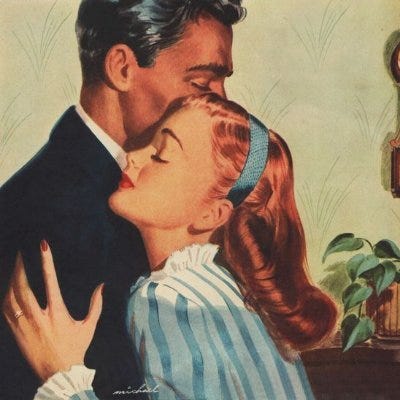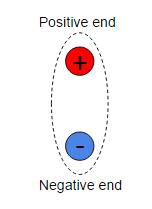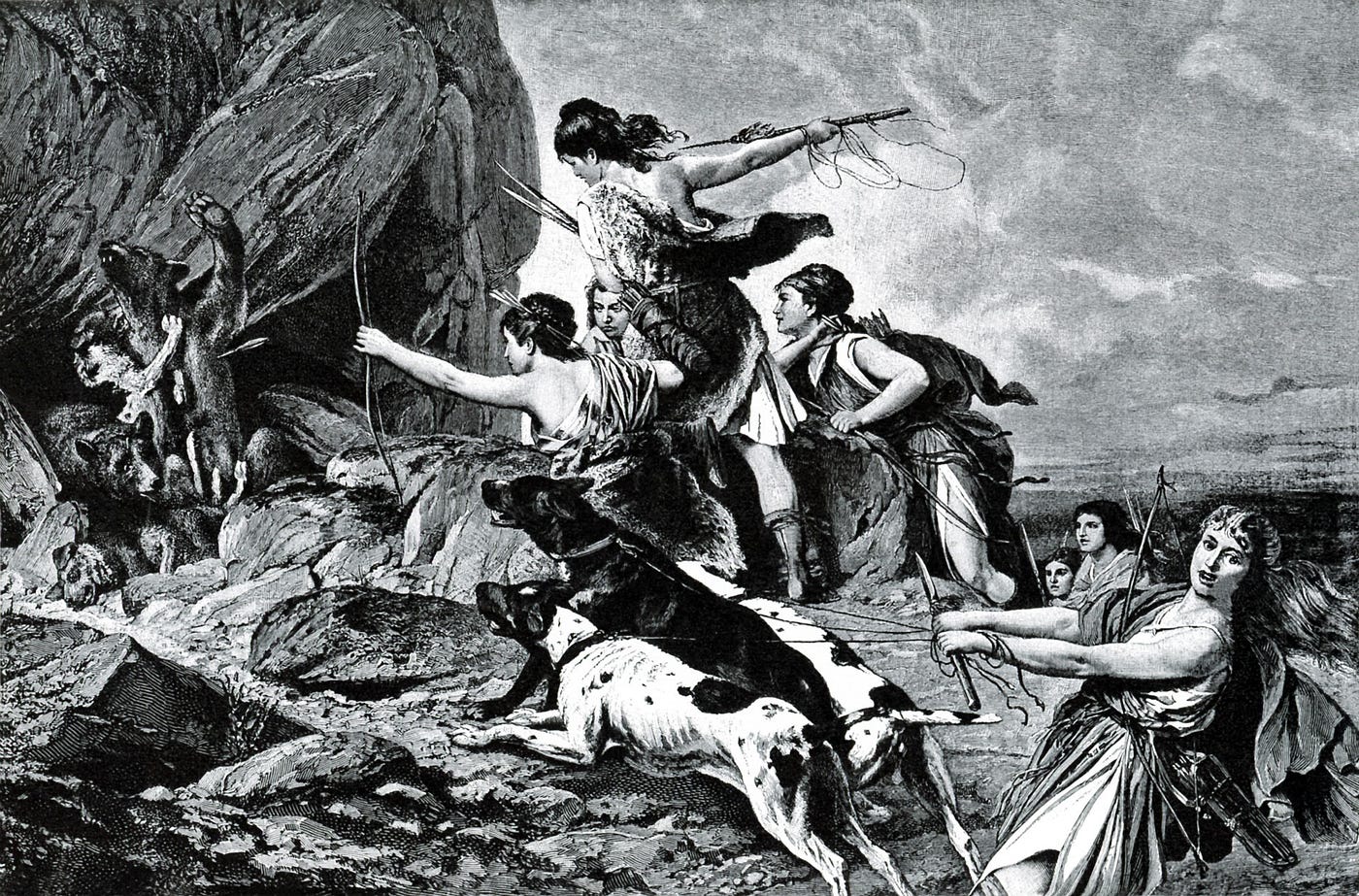A criticism of gender essentialism

“What is a woman?”
This crucial question lies at the center of Simone de Beauvoir’s analysis in The Second Sex. In the introductory pages, Beauvoir expresses her apprehensiveness in writing a book on what constitutes woman, noting that this subject matter is irritating and has been thoroughly explored, with answers already provided about the nature of woman and femininity. However, despite this, discussions about the nature of what constitutes a woman persists in sociopolitical discourse, a reality that remains relevant today.
There have been various answers as to what constitutes a woman:
“Tota mulier in utero: she is a womb,” some say. (The Second Sex, 3)
However, this form of gender essentialism falls short in recognizing that the classification of women extends beyond reproductive organs. For example, the notion of “acting like a woman” does not necessarily involve or presuppose a specific organ. Even if a woman possesses ovaries and a uterus, societal constructions dictate behavioral norms associated with femininity. To be clear, Beauvoir is not denying that there are classifications of people based on reproductive organs that we title “male” and “female”. Her analysis, however, raises doubts about the existence of an inherent essence defining femaleness — a genuine femininity (‘a Platonic heaven’).
She writes:
We are urged, ‘Be women, stay women, become women.’
So not every female human being is necessarily a woman; she must take part in this mysterious and endangered reality known as femininity.
(The Second Sex, 3)
Therefore, Beauvoir directs her focus to the examination of femininity in this context. If femininity is perceived as a vulnerable concept, with demands imposed upon women in order to save it, it becomes essential to comprehend the nature of femininity (that is, if femininity even exists). Nevertheless, it seems that femininity is something mysterious as defining what consitutes a real woman remains elusive. Beauvoir articulates this idea, stating: “Although some women zealously strive to embody [femininity], the model has never been patented” (The Second Sex, 3).
If there is no such thing today as femininity, it is because there never was. (The Second Sex, 4)

One common response to this question of femininity is nominalism — an idea that we should simply place women within the broader category of human beings. Beauvoir rejects this idea suggesting that attempts to resolve this entire discussion by dismantling the concept of the eternal feminine is flawed. She writes:
To reject the notions of the eternal feminine, the black soul or the Jewish character is not to deny that there are today Jews, blacks, or women: this denial is not a liberation for those concerned but an inauthentic flight.
(The Second Sex, 4)
For Beauvoir, denying the existence of these subject positions is not the path towards liberation. It is inauthentic for a woman to deny or ignore their gender as “no woman can claim without bad faith to be situated beyond her sex” (The Second Sex, 4). To ignore the imposition of gender would be a dangerous praxis.
Women are defined in opposition to the dominant imposition of man. As stated on page 5, “A man never begins by positing himself as an individual of a certain sex: that he is a man is obvious.” The innate relationship between the two sexes should not be conceptualized like two electrical poles with positive and negative charges. While the current gender hierarchy often perceives it this way, with man occupying a positive subjectivity while women are defined through negation, such a simplistic characterization only reifies socially constructed gender tropes.

Nevertheless, women find themselves confined to this subjective position solely because of their possession of ovaries and a uterus. However, it is crucial to note that “man vainly forgets that his anatomy also includes hormones and testicles” (The Second Sex, 5).
*Note: While Beauvoir’s work has faced criticism for potentially adopting gender essentialist perspectives, it was considered highly progressive for its time. I intend to delve further into contemporary works that explore gender-related themes in future blogs.
He is the Subject; he is the Absolute.
She is the Other.
(The Second Sex, 6)
Throughout human history, there has existed the duality between the Self and Other for millennia. However, this duality is not innately tied to femininity.
In couples such as Varuna-Mitra, Uranus-Zeus, Sun-Moon, Day-Night, no feminine element is involved at the outset … No group ever defines itself as One without immediately setting up the Other opposite itself.
(The Second Sex, 6)

However, is it not conceivable for the transformation of the Other into the One? Or for the Other to not occupy an inherently inferior position? Beauvoir reflects on this matter: “In order for the other to not turn into the One, the Other has to submit to this foreign point of view. Where does this submission from woman come from?” (The Second Sex, 7). Evidently, Beauvoir recognizes that there are instances where the majority maintains its domination over the minority absolutely — but these are in cases where there is “often numerical inequality” between groups. She emphasizes that women, unlike Black individuals or Jewish people, are not a numerical minority; “there are as many women as men on the earth” (The Second Sex, 7).
Yet, unlike Black or Jewish individuals, the subjugation of women cannot be tied to any historical event, date, or time, that allowed for their subordination. And in this specific case, Black and Jewish individuals “share a past, a tradiction, sometimes a religion, or a culture” to relate with one another over (The Second Sex, 8).
Maybe a better comparison would be between women and the proletarian. For the proletarian, there isn’t “one event but a whole historical development [that] explains their existence as a class and accounts for the distribution of these individuals in this class” (The Second Sex, 8). But even then, unlike the proletarian, whose struggle is tied to the imposition of class, the subjugation of women has been a consistent aspect of societal structures across various historical contexts.
Beauvoir further isolates the difference between the proletarian and women by stating that proletarians utilize the term “we” to refer to themselves in order to transform the bourgeois into the category of the “Other.” Yet, women have adopted the term “women” to refer to themselves: “[women] do not posit themselves authentically as Subjects” (The Second Sex, 8).
So … why not fight back? It is because:
[Women] lack the concrete means to organize … they have no past, no history, no religion of their own … (The Second Sex, 8)
Perhaps a more pertinent question is how and why men initially prevailed in the ‘battle of the sexes’? What were the mechanisms at play? (This will be explained later in The Second Sex)
At any rate, certain facets of human history, such as religious narratives, have provided justifications for men’s dominance.
Religions forged by men reflect this will for domination: they found ammunition in the legends of Eve and Pandora.
(The Second Sex, 11)
And, it isn’t just religion. All of the sciences have been pervaded by men on a mission to prove themselves superior to women. Regardless of how men have justified their domination, Beauvoir notes that there are clear benefits to occupying the position of the oppressor:
One of the benefits that oppression secures for the oppressor is that the humblest among them feels superior … The most mediocre of males believes himself a demigod next to women.
No one is more arrogant toward women, more aggressive or more disdainful, than a man anxious about his own virility.
(The Second Sex, 13)
However, even men that assert (and genuinely believe) that they perceive women as equals can inadvertently succumb to the myth of Woman, reaping its advantages. For instance, in a democratic society that emphasizes individual equality, it it is effortless for men to assume there is no issue. Numerous men witness their mothers embodying indepdence through employment and financial autonomy during their upbringing. These very men, at times, are genuine in their expression of love for women, treating sisters, mothers, and wives with respect, which can lead them to believe that there is no persistent social hierarchy between the sexes. However, Beauvoir notes that the dynamic changes when conflicts arise, as men can adeptly “apply the concrete inequality theme” when it serves their interests (The Second Sex, 14).
However, it is not just men that Beauvoir criticizes. Beauvoir even criticizes popular feminist arguments:
What people have endlessly sought to prove is that woman is superior, inferior, or equal to man: created after Adam, she is obviously a secondary being some say; on the contrary, say others, Adam was only a rough draft, and God perfected the human being when he created Eve … Christ was made man, but perhaps out of humility.
Every argument has its opposite, and both are often misleading.
(The Second Sex, 15)

Ultimately, Beauvoir concludes by providing an overview of the content that follows in The Second Sex:
We will begin by discussing woman from a biological, psychoanalytical, and historical materialist point of view.
We will then attempt to positively demonstrate how “feminine reality” has been constituted, why woman has been defined as Other, and what the consequences have been from men’s point of view.
Then we will describe the world from the woman’s point of view such as it is offered to her, and we will see the difficulties woman are up against just when, trying to escape the sphere they have been assigned until now, they seek to be part of the human Mitsein.
(The Second Sex, 17)
Beauvoir concludes the introduction by saying:
If woman discovers herself as the inessential and never turns into the essential, it is because she does not bring about this transformation herself. (The Second Sex, 18)
Leave a Reply